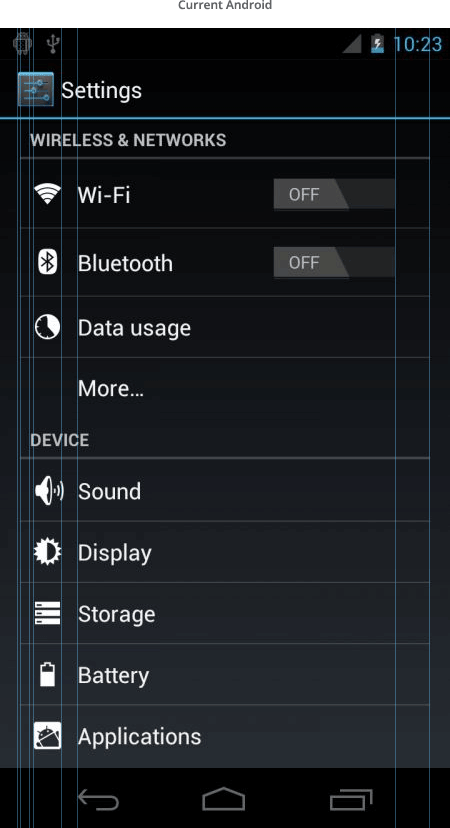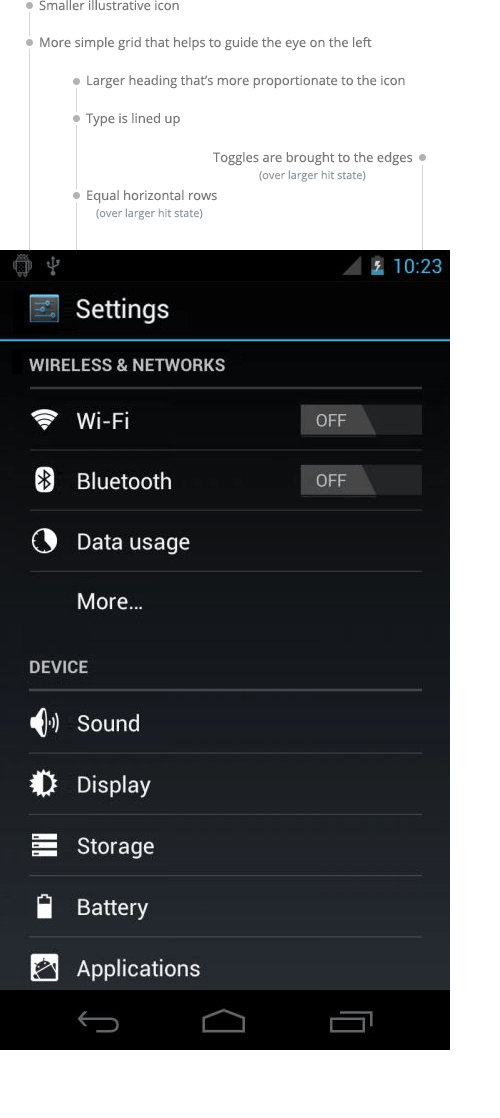It’s a matter of taste
This is a quick note on the flat v. depth debate and I can already hear you thinking, “Whatever, brah.” I’ll be quick as I’m not trying grind this horse into a fine paste let alone kick it another time.

I don’t believe that either “style” or “philosophical stance” is more correct or better than the other. I often believe that the answer is somewhere in between, and always believe that the right tool should be used for the right job. Sometimes UI calls for flat elements and sometimes it calls for dimensional ones.
As for how, and the degree to which, the effects are actually applied simply comes down to taste. Take two visual design decisions that have gone into Dropbox for iOS.
First, the headers feature subtle gradients that are not quite flat and far from the bubbly nature of stock iOS headers. If we followed suit and used the more stark contrast of iOS’s gradients we’d end up...






